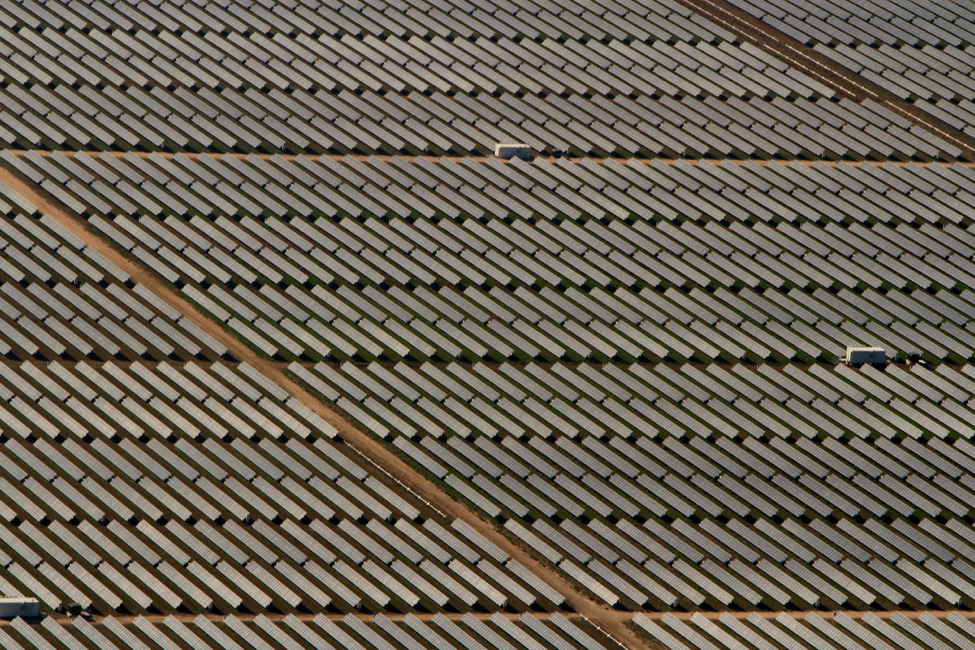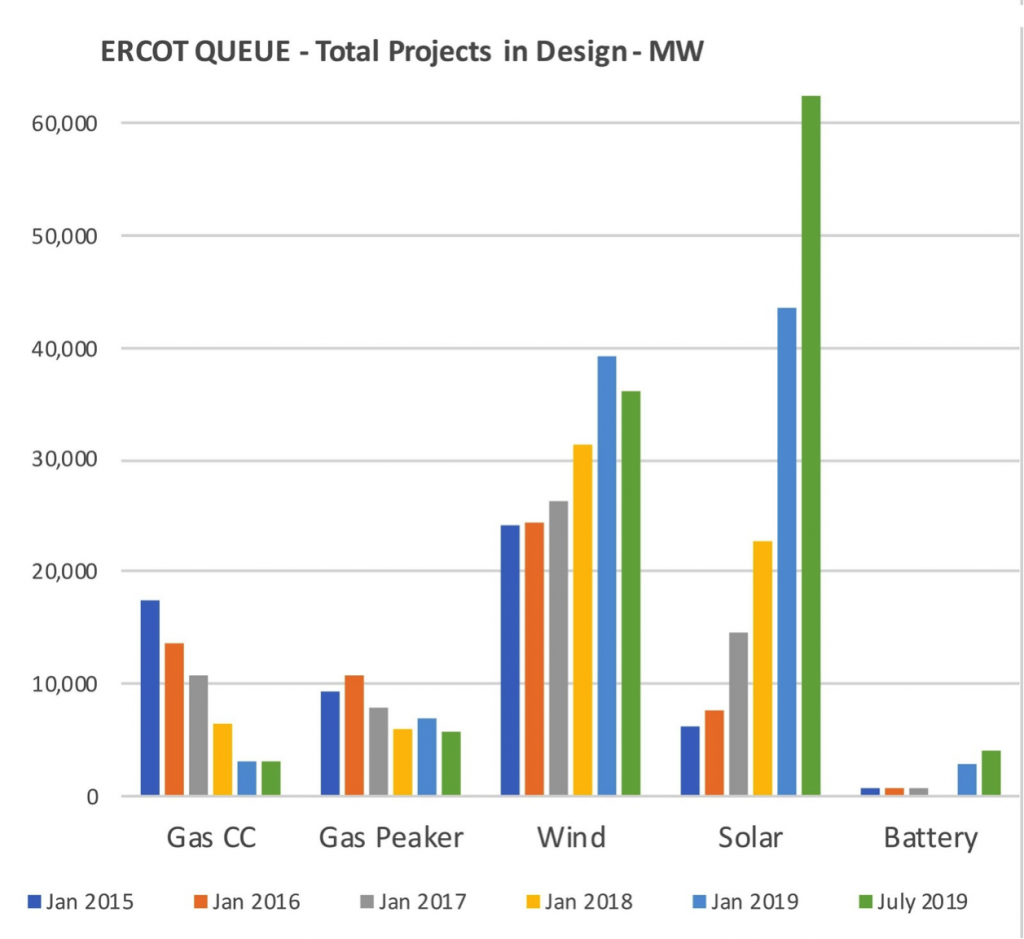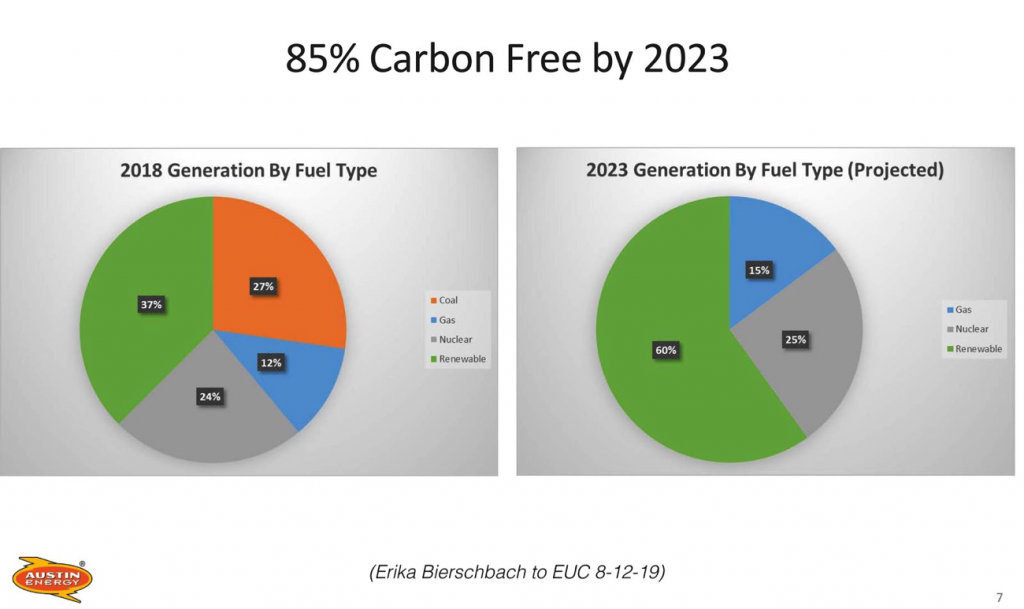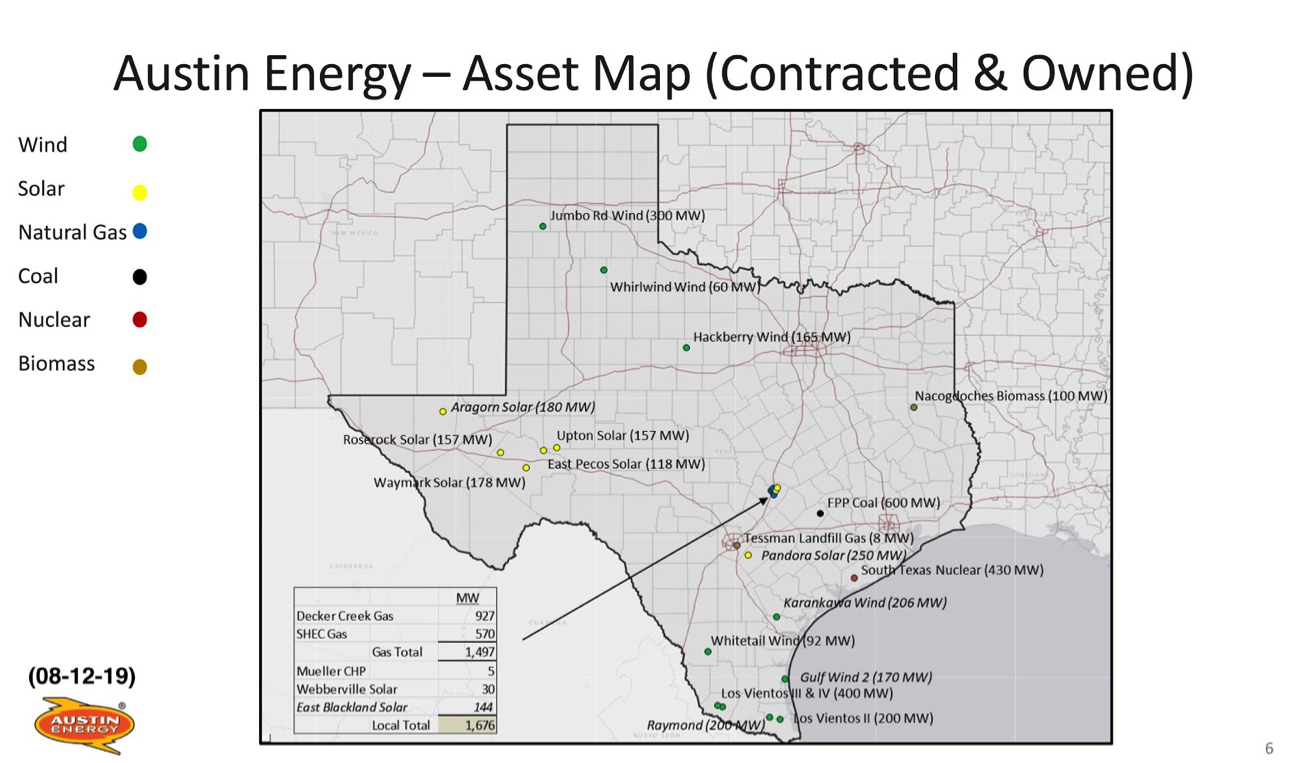Guest Editorial – from Al Braden
Al Braden is a local environmental activist and photographer. He is also a member of the Electric Utility Commission Resource Planning Working Group, which is helping to advise Austin Energy and City Council on where Austin should get its energy for the next 10 years.
First, some good news – We are in the middle of a solar land rush in Texas!
Second, a few things you should know about how Austin manages its energy (and decides where it comes from):
1. Austin is extremely fortunate to own our electric utility. We can optimize both environmental goals and customer prices as we move to eliminate climate warming emissions. Austin is a city with expansive citizen participation on boards and commissions, making recommendations to City Council on a huge variety of specialized issues.
2. Electric power is so important that two citizen commissions review Austin Energy. The Electric Utility Commission (EUC) looks at all purchases, plans and results. Eleven members are appointed by the ten Council members and the mayor. The Resource Management Commission (RMC) evaluates resource issues like rooftop and community solar, energy efficiency and weatherization. Their 11 members are also appointed by Council members and the mayor.
3. Austin Energy is a big part of the city’s finances with a budget over $1 billion and over $100 million in revenues transferred to the city. Accordingly, the entire City Council – meeting as the board of directors – forms the Austin Energy Utility Oversight Committee (AEOUC). Following monthly meetings, their decisions go to a Council meeting for approval.
4. Texas has its own independent electric grid – managed by the Electric Reliability Council of Texas (ERCOT). This chart shows new energy projects in development throughout Texas as of July. It takes several years to bring a large energy project on board. Not all of these will make it to completion, but it demonstrates the overwhelming interest in new solar and wind energy.
Once you install solar panels and wind turbines – who can compete with the abundant and free natural fuel sources of sunshine and wind? Texas is rich in both!
Big battery projects are beginning to show up – the next important renewable energy technology poised to take off. Analysts project natural gas plants built now will likely not reach payback before they are scrapped.
And what does all of this have to do with climate change?
As the climate crisis began to become clear in 2007, Austin City Council got serious. Their groundbreaking 2007 Climate Resolution (20070215-023) directed – among other things:
- All city operations would be powered by renewable energy by 2012. They nailed it by 2011 with Green Choice wind power.
- Austin Energy would reach 30 percent renewable energy by 2020. We are now at 41 percent – headed for 61.7 percent by 2024. The 85 percent carbon free by 2023 graphic below includes nuclear – which is carbon free – contributing roughly 25 percent of Austin’s energy.
- We would save enough energy through energy efficiency by 2020 to avoid building a major new power plant. Check!!!
- We would have at least 100 Megawatts (MW) of solar energy by 2020. We are on track for over 1,300 MW solar by 2020! This remarkable achievement of that early goal is a groundbreaking contribution to turning Texas to toward solar power.
- We would make the city fleet carbon neutral by 2020. This is a huge miss – despite Austin Energy having powered over 800 EV charging stations all over town – accessible for $4.17 per month. Fleet operations must get with the plan!
On August 28, 2014, over a hundred climate activists fought hard for a Council Resolution (20140828-157) to get Austin Energy to zero carbon by 2030. It passed unanimously – with important support by Council Member Kathie Tovo – now Chair of the Austin Energy Utility Oversight Committee. With that vote – we won a victory – but the economics weren’t there yet. Five years later, solar power pricing has dropped below new natural gas energy.
We are closing our major polluting fossil fuel plants – the two large Decker Lake steam generators by 2021 and 2022 respectively and our 1/3 share of the Fayette coal plant by 2022. We’ll close our troubled Nacogdoches wood chip plant in 2022, leaving only one gas plant at Sand Hill and some gas peakers.
Every two to three years, Austin takes a deep dive into its electric generation assets with the “Generation Plan Update.” In 2014 we fought against entrenched powers in the utility and spurred groundbreaking planning that led to today. Now new management at Austin Energy is working hard to achieve the Council’s clean energy vision.
I watched those discussions as an interested citizen – expressing my views during the citizen communication portion of the meeting. I waited for the day when solar and wind would be more economical that fossil fuels. I wished for safe, pollution-free electricity while protecting ratepayers. I wanted to eliminate climate warming carbon from our electric generation plans. Now with the support of the many activists at 350-Austin attending EUC, RMC, AEUOC and Council meetings, we have a seat at the table. It looks very possible to get to zero carbon earlier than 2030 – let’s analyze if 2025 is possible.
Austin is leading Texas in solar power as the new Generation Plan Working Group gets to down to business. We have the opportunity to eliminate greenhouse gases – especially carbon dioxide and methane emissions. Our big renewable energy contracts are spread strategically across the state. The more varied our locations, the more we are able to withstand a drop of wind in one region or cloud cover in one area as weather patterns shift.
This Austin Energy generation map includes newly committed projects in italics. Large solar projects near Pflugerville (East Blackland Solar 144 MW) and San Antonio (Pandora Solar 250 MW) will help balance the weather and congestion risk of our West Texas solar. By 2020, we’ll have 1,324 MW solar and 1,773 MW wind. Still more will be added each year to meet Austin’s future power needs and complete the elimination of fossil fuels.
The 2019-2020 Austin Energy Generation Planning Working Group… And How To Get Involved
Important Austin Energy studies are now ready for discussion by City Council in response to renewable and energy efficiency goals of the 2017 Generation Plan as well as a host of specific projects. Meeting information and reports on the 2019-2020 Generation Plan Working Group is on the Austin Energy website. That plan called for a minimum of 65 percent renewable energy by 2027 with aspirations of reaching 75 percent if possible. As we hit 60 percent renewable and 85 percent carbon free by 2023, the question now becomes, “How fast can we get off carbon all together?” Can we kick the smoking habit by 2025?
Meeting Dates:
- September 12 and 26
- October 10 and 24
- November 7 and 21
- December 5 and 19
- January 9 and 23 (if required)
Citizen Communication is allowed at the start of each second meeting of each month. The first five speakers to sign up will have three minutes. This is an important citizen process showing citizen engagement and support for responding to the climate crisis.
Make your voices heard.
Zero carbon electricity in Austin is within reach! We need everyone’s work to make it happen.
Please note – editorials and sponsored posts are written by guest writers to inform and educate the community on a variety of different viewpoints, as well as to share information about local eco-friendly businesses and organizations. However, they do not necessarily reflect the opinions of the Austin EcoNetwork.






